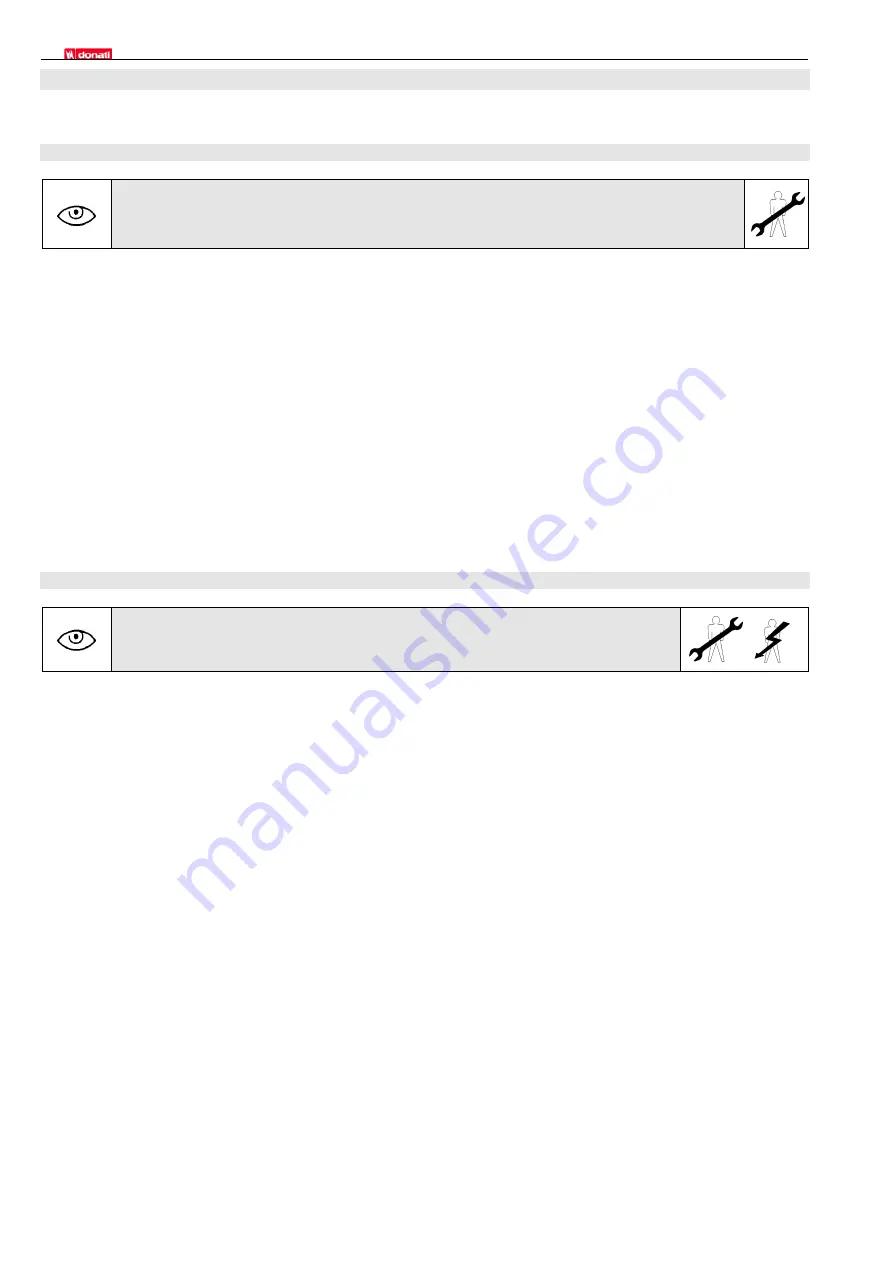
DONATI SOLLEVAMENTI S.r.l. - Via Quasimodo,17 - 20025 Legnano (MI) - Tel. 0331 14811 - E: [email protected]
28
4.5 Disabling the units
4.5.1 Storing the units and parts
If the “DGT” drive units and endcarriages must be stored for an extended period,
proceed as follows to avoid damage or deterioration:
•
Protect all mechanisms and work surfaces with rust-proofing products.
•
The materials are designed for indoor installation and can be stored up to a maximum period of two years in
a protected environment presenting the following specifications:
•
protected from atmospheric agents
•
relative humidity not exceeding 80%
•
temperature: minimum - 20°C; m 60°C
•
If these conditions should become altered during storage, preliminary control checks must be conducted
before setting up and operating the equipment (see sect. 4.5.2 “Resetting up the units after storage”)
•
If the temperature in the storage area exceeds or falls below the values indicated, and the relative humidity
exceeds 80% set up protections using barriers and hygroscopic salts.
•
For outdoor storage:
•
set blocks under all materials not placed onto pallets
•
protect all materials using barriers and hygroscopic salts
•
Demarcate and cordon off the material storage areas.
4.5.2 Resetting up the units after storage
Before operating the “DGT” drive units and endcarriages after an extended
storage period, proceed as follows:
•
Structure:
•
eliminate traces of lubricant or products adopted to preserve the structure
•
clean boreholes of any grease residue
•
clean all surfaces around joint areas
•
repair any structural damage (scratched surfaces, scarred paintwork, etc.)
•
Mechanisms:
•
check for lubricant leaks; if any are found, contact the technical servicing department at Donati Sollevamenti
S.r.l.
•
make certain all mechanisms are properly set and fixed onto the structures.
•
eliminate residues of water from grooved sections on the mechanisms or structure.
•
use grease to moderately lubricate toothed joints and couplings on wheels and reducers.
•
Electrical equipment:
•
eliminate any condensation from the motors and terminals; dry using jets of air
•
check the operation of the brakes for damage and wear
•
carefully clean surfaces on braking seals, eliminating traces of humidity
•
check the operation of the limit switches
•
conduct electrical rigidity and insulation tests for storage periods exceeding 6 months
•
carefully check the operation an efficiency of all electrical conductors
















































